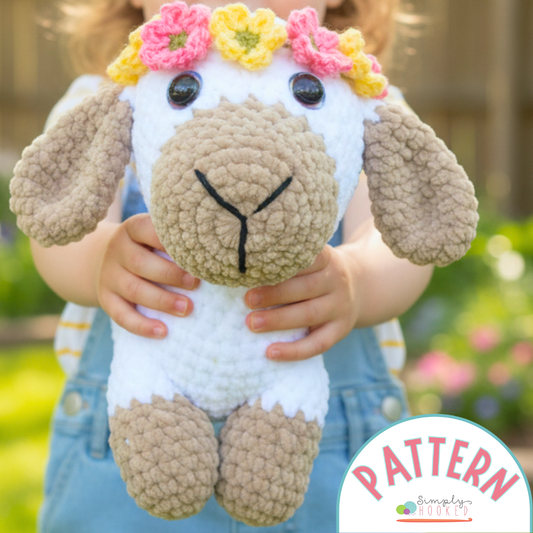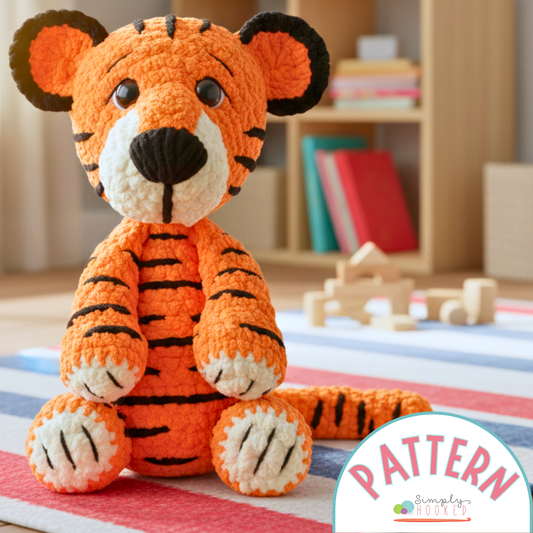If you’re a crochet designer, you’ve probably asked yourself:
“Why would anyone choose my crochet pattern when there are thousands of others out there?”
That creeping doubt is called imposter syndrome, and it’s one of the most common mindset challenges creative entrepreneurs face — especially in the handmade business world. Whether you sell amigurumi patterns, write crochet tutorials, or run a crochet business, imposter syndrome can hold you back from reaching your full potential.
In this article, we’ll explore what imposter syndrome is, why crochet designers are prone to it, and — most importantly — how to overcome it so you can grow your crochet business, sell more patterns, and stand out from the crowd.
What Is Imposter Syndrome in Crochet Design?
Imposter syndrome is the persistent belief that your skills or achievements aren’t enough — that you’re somehow a fraud in your field. For crochet designers, this often sounds like:
🧶 “My crochet patterns aren’t original enough.”
🧶 “I can’t compete with big-name designers.”
🧶 “No one will pay for my patterns when there are free ones online.”
🧶 “I don’t have the credentials or experience to be a ‘real’ crochet designer.”
The irony? Many successful crochet pattern sellers still experience imposter syndrome — even after years of positive reviews and strong sales.
Why Crochet Designers Are Especially Prone to Self-Doubt
Imposter syndrome can happen in any creative industry, but crochet designers face unique challenges:
🧵 Subjective standards – “Good” design is in the eye of the beholder.
🧵 Social media overload – Platforms like Instagram can flood you with stunning crochet creations daily, triggering comparison.
🧵 Perfectionism – Many designers won’t release a pattern unless it’s flawless.
🧵 Market saturation perception – The belief that there’s no room for more crochet designers because the market is “too crowded.”
The truth? A crowded market means there’s demand. If people are buying and making crochet patterns, there’s room for more — including yours.
The Mint Chocolate Chip Epiphany: How I Overcame My Own Imposter Syndrome

When I first thought about creating my giraffe snuggler crochet pattern, I was excited — until the doubts came:
“There are already so many giraffe patterns… why would anyone buy mine?”
Then I found myself standing in the grocery store, staring at over 20 different brands of mint chocolate chip ice cream. The same flavor, countless variations: creamier, chunkier, organic, dairy-free.
That’s when it clicked: crochet patterns are like ice cream flavors. My giraffe snuggler wasn’t “just another” giraffe — it was my version, with my yarn choices, my eye placement, my little design quirks. For someone, my version would be the version they loved.
That’s when I realized: Your job isn’t to be the only choice — it’s to be the right choice for someone.
 How to Stand Out as a Crochet Designer in a Crowded Market
How to Stand Out as a Crochet Designer in a Crowded Market
When you’re battling imposter syndrome, it’s easy to think the crochet market is “too saturated.” In reality, people want options. They’re drawn to different designers for different reasons. Here’s how to make sure your work shines:
🧶 Identify your unique style – Do you use bold colors? Minimalist stitches? Detailed embroidery? Lean into those strengths.
🧶 Tell your story – People connect with you as much as your patterns. Share your creative journey.
🧶 Offer clear, beginner-friendly instructions – Many buyers value clarity over complexity.
🧶 Focus on your ideal customer – Your patterns aren’t for everyone — and that’s a good thing. Design for the makers who love your style.
Practical Tips for Overcoming Self-Doubt in Your Crochet Business
Here’s how to quiet the voice of imposter syndrome and keep creating:
🪡 Reconnect with your why – Remember why you started designing crochet patterns in the first place.
🪡 Celebrate small wins – Keep a “success folder” with customer photos, positive reviews, and sales milestones.
🪡 Limit comparison – Curate your social feeds to inspire, not discourage.
🪡 Engage with the crochet community – Join Facebook groups, participate in CALs (crochet-alongs), and test patterns for other designers.
🪡 Set realistic goals – Break big projects into smaller, achievable steps.
Crochet Pattern Design Tips That Build Confidence
If imposter syndrome is telling you your patterns aren’t good enough, try these design tips to boost your confidence:
🧵 Start with what you love to make – Passion shows in your work.
🧵 Test your pattern thoroughly – Use pattern testers to ensure accuracy and clarity.
🧵 Invest in clear photography – Well-lit, styled photos increase trust in your work.
🧵 Write in plain language – Clarity and accessibility make your patterns more appealing to beginners.
Why Your Voice Matters in the Crochet Design Community
No one else can create exactly what you do, in the way you do it. That alone is enough reason to share your work. The crochet community thrives on variety — and your patterns add to the richness of that tapestry.
When self-doubt creeps in, remind yourself: For someone, you are the crochet designer they’ve been searching for.
Final Word: From Imposter Syndrome to Crochet Confidence
Overcoming imposter syndrome as a crochet designer doesn’t mean you’ll never feel doubt again — it means you’ll keep creating despite it.
The more you share your patterns, connect with your audience, and lean into your unique style, the more your confidence will grow. And when you show up consistently, your crochet business will grow right alongside it.
So pick up your hook, embrace your creative voice, and remember: the world needs your patterns.
About the Author

Marcy Gardner is the crochet designer behind Simply Hooked, where she creates beginner-friendly amigurumi patterns that help makers of all skill levels create adorable, giftable plushies.
With over 13 years of crochet experience, Marcy has taught hundreds of crocheters through her patterns, kits, and online courses.





